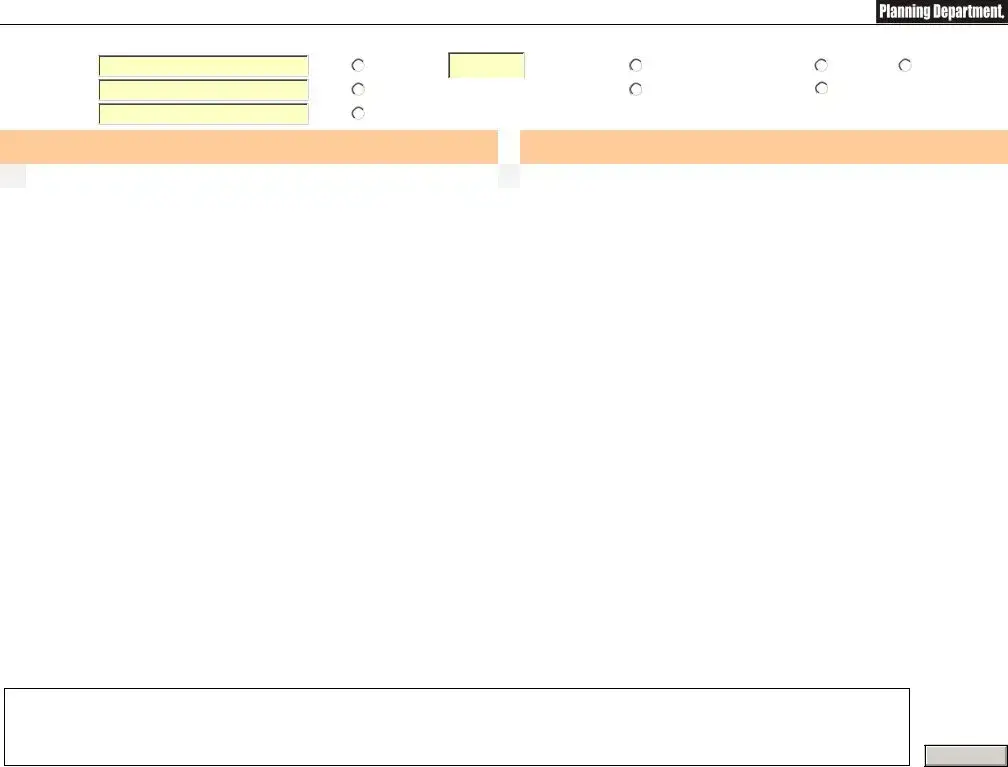The Electrical Load Calculation form is similar to the Electrical Panel Schedule in that both documents are essential for understanding the electrical demands of a building. The Load Calculation form outlines the anticipated electrical load based on various factors such as the size of the building, the number of electrical appliances, and the type of occupancy. This information helps ensure that the electrical system is designed to handle the expected load, just as the Panel Schedule details the specific circuits and their respective loads, providing a comprehensive overview of the electrical distribution system.
The Circuit Directory serves a function akin to the Electrical Panel Schedule by detailing the specific circuits connected to the electrical panel. It lists each circuit along with its corresponding breaker size and the areas or appliances it serves. This document is crucial for maintenance and troubleshooting, as it allows electricians and homeowners to quickly identify which circuit controls what part of the electrical system, similar to how the Panel Schedule organizes this information for easy reference.
The One-Line Diagram is another document that shares similarities with the Electrical Panel Schedule. This diagram visually represents the electrical system's layout, including the electrical panel, circuits, and major components. While the Panel Schedule provides a written format of circuit loads and breaker sizes, the One-Line Diagram offers a graphical representation, making it easier to understand the overall system at a glance. Both documents work together to provide a complete picture of the electrical setup.
The Service Entrance Diagram outlines how electricity enters a building and is comparable to the Electrical Panel Schedule in that it details critical components of the electrical system. This document shows the main service disconnect, meter location, and the main panel, much like the Panel Schedule describes how power is distributed throughout the circuits. Understanding both documents is essential for ensuring that the electrical service is safe and reliable.
The Load Balancing Report is similar to the Electrical Panel Schedule in its focus on ensuring that electrical loads are evenly distributed across circuits. This report analyzes the load on each circuit and identifies any imbalances that could lead to overheating or circuit failure. The Panel Schedule assists in this process by providing the necessary data on each circuit's load, allowing for informed adjustments to be made to maintain balance and safety.
Understanding the importance of verifying employment details can be crucial; for that reason, many individuals seek access to a form that assists in such confirmations. For clear guidance on completing this process, one may refer to the comprehensive Employment Verification document available at the Florida Employment Verification form. This resource is vital for securing necessary endorsements during various evaluations, such as financial applications or assessments of job history.
The Maintenance Log for electrical systems parallels the Electrical Panel Schedule by tracking the performance and service history of the electrical panel and its circuits. This log includes records of inspections, repairs, and any modifications made to the system. Both documents are vital for ensuring that the electrical system operates efficiently and safely, as they provide a historical context for ongoing maintenance needs.
The Wiring Diagram is another document that complements the Electrical Panel Schedule. It illustrates the actual wiring connections and configurations within the electrical system. While the Panel Schedule focuses on load management and circuit details, the Wiring Diagram provides a technical view of how those circuits are physically arranged. Together, they ensure that electricians have both the functional and physical aspects of the system at their disposal.
The Electrical Inspection Report is similar to the Electrical Panel Schedule in that it provides a comprehensive assessment of the electrical system's compliance with safety standards. This report is typically generated after an inspection and includes findings related to the panel, circuits, and overall system integrity. The Panel Schedule supports this report by offering detailed information about circuit loads and configurations, which inspectors use to evaluate safety and compliance.
Finally, the Energy Usage Report is comparable to the Electrical Panel Schedule in that it analyzes how energy is consumed throughout a building. This report breaks down energy usage by circuit or appliance, allowing homeowners and facility managers to identify areas where energy efficiency can be improved. The Panel Schedule aids in this analysis by providing the necessary circuit information, helping to pinpoint where adjustments can be made for better energy management.

